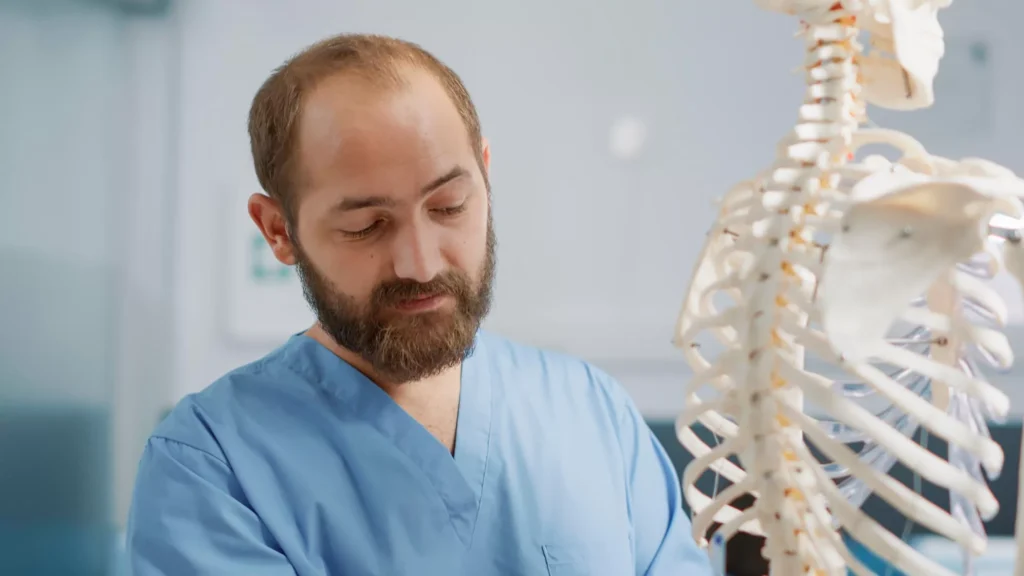
Table of Contents
ToggleSpine surgery is a safe and effective procedure in most cases. However, there are several factors that must be considered before undergoing surgery.
These include the type of spine disorder being treated, the patient’s overall health and medical history, and the potential risks associated with any given procedure.
In this article we will discuss some general principles of spine surgery, as well as the different types of procedures used to treat spinal disorders—including a laminectomy; discectomy (removing herniated disc material); and minimally invasive interventions such as endoscopic discectomy or percutaneous discectomy.
Spine surgery is a safe and effective procedure for the treatment of back pain. However, it is not a cure for back pain.
Spine surgery should only be performed when other therapies have failed and you have been told that your symptoms will continue to get worse if they are not treated surgically.
Spine surgery can be performed on the spine itself or on adjacent nerves or muscles around the spine. When surgery is performed on one or more vertebrae (bones) in your spinal column, it is referred to as an anterior approach.
This type of surgery is used most often to treat a herniated disc (sometimes called a slipped disc) or to remove bone fragments from around an injured nerve root.
A posterior approach involves removing bone from behind the vertebral bodies (the bony part of each vertebra), which allows access to spinal nerves and/or the spinal cord itself.
A posterior approach may be necessary if there is too much pressure on one or more nerves due to damage from injury or disease such as arthritis, spondylosis (wear-and-tear changes in your spine), trauma (such as whiplash), tumors, infection, or congenital malformations such as spina bifida (open).

Do not eat or drink anything after midnight the night before surgery. If you take medications regularly, ask your doctor if you should continue taking them up until the morning of surgery. If so, bring them with you to the hospital in their original containers and doses as directed by your physician.
Make sure to bring any special equipment you will need for home care, such as canes, walkers or wheelchairs; dressing aids such as scissors, tweezers and razors—as well as toothbrushes and mouthwash, shampoo (if your hair is long).
The emergency department is the best place to start. If you have neck or back pain, it’s important that you see a doctor right away and get diagnosed correctly.
Surgery can be done under local or general anesthesia, depending on your preference and whether or not you have had any recent surgeries. Sometimes surgery is performed with an MRI scan; other times, it isn’t necessary at all!
The same goes for CT scans and X-rays–they may be used during your procedure but aren’t always necessary beforehand.

Laminectomy is a surgical procedure where the lamina and/or spinal canal are removed and the dura mater is exposed. The surgery is performed to relieve pressure on the spinal cord and nerve roots. This can be caused by herniated discs, spinal stenosis, or degenerative disc disease.
When performing a laminectomy, an incision is made in the skin above the spine and an opening is created through which the spinal cord and nerves can be accessed. The surgeon will then remove laminae (skeletal structure) from above and below the disc space that is causing compression.
The surgeon will then remove any bone spurs or other tissue that may be present in order to fully expose the nerves under compression.
The surgeon will then suture closed any holes created during surgery before closing up incisions using sutures or staples all around them so they heal properly without infection occurring inside them while healing occurs externally over time afterwards as well.
Discectomy is a surgical procedure to remove the part of a disc that is bulging or herniated. It may also be done to remove bone spurs or other abnormal tissue that causes pressure on your spinal cord, nerve roots and spinal nerves.
Endoscopic discectomy is a minimally invasive procedure used to remove disc material from inside your spine using an endoscope (a thin tube with lens and light). The surgeon makes a small incision in your back near where they want access to do their work through an opening called an access site.
Spinal stenosis is a condition that occurs when the spinal canal narrows. This can lead to pain, weakness, numbness and muscle spasms.
Spinal stenosis is treated with nonsurgical treatments such as medication and physical therapy. Surgery may be needed if nonsurgical treatment isn’t working or if the symptoms get worse.
Surgery for spinal stenosis depends on the severity of your symptoms and which part of your spine is affected. The type of surgery you have depends on which vertebrae are affected by the narrowing of the canal.
When you’re facing surgery, it can be hard to know what to expect. At Long Island Neuroscience Specialists, we want you to feel as prepared as possible for your procedure, so we’ve put together this guide for you.
Spine surgery is used to treat a variety of conditions, including spinal stenosis (an abnormal narrowing of the spinal canal), scoliosis or kyphosis (curvature from degenerative disc disease), tumors and other disorders.
In most cases, one or more vertebrae are removed and replaced with an artificial disc or bone graft material.
A number of factors will determine how long your recovery will take after spine surgery: how severe your condition is before surgery; whether any nerves have been damaged; whether there are any problems with the blood flow to the area; whether any muscles have been weakened by the damage; and whether any other joints have been affected by this condition as well.
Spine surgery is a safe and effective procedure in most cases.
The decision to have spine surgery should be made only after careful consideration of the risks involved, and after discussing these risks with your doctor.
Spine surgery can help relieve pain from spinal stenosis, herniated discs, osteoporosis, arthritis and compression fractures.
The most frequently performed procedures are laminectomy and discectomy for decompression of the spinal cord or nerve root, spinal fusion for vertebral collapse or instability, laminoplasty for instability due to degenerative changes in the vertebral body, and endoscopic discectomy for removal of a small disc fragment.
GET IN TOUCH +
285 Sills Road
Building 5-6, Suite E
East Patchogue, NY 11772
(631) 475-5511
184 N. Belle Mead Road
East Setauket, NY 11733
(631) 675-6226
GET IN TOUCH +
285 Sills Road
Building 5-6, Suite E
East Patchogue, NY 11772
(631) 475-5511
184 N. Belle Mead Road
East Setauket, NY 11733
(631) 675-6226
SUBSCRIBE TO OUR NEWSLETTER +
Send us a Google review. Click this link and let us know how we did!
Review us on Yelp too.